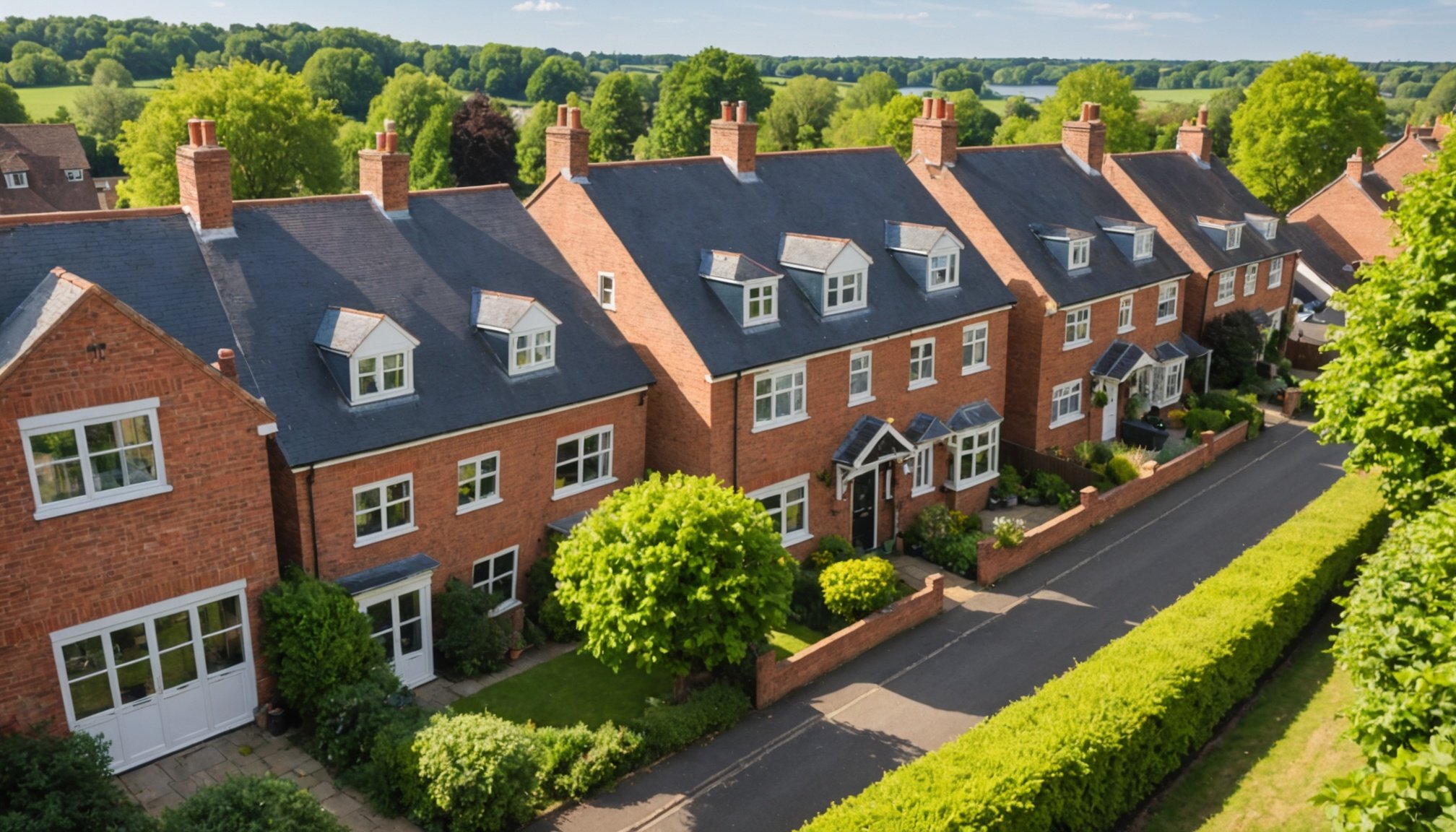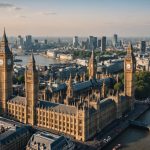Overview of the UK’s Green Deal
The UK Green Deal initiative, launched to enhance energy efficiency, is pivotal in reducing carbon footprints and energy consumption in residential properties. This government-backed scheme aimed to encourage homeowners to implement green technologies by providing financial support for energy-saving improvements. These included insulation, heating, and renewable energy installations.
Historically, the development of the Green Deal was driven by the UK’s commitment to meet carbon reduction targets and foster an economy less reliant on fossil fuels. It emerged from a broader campaign to combat climate change and conserve energy resources efficiently. The Green Deal, though ambitious, faced challenges in uptake due to complex application procedures and repayment terms, which required better clarity for homeowners.
Also to discover : Unlocking Value: The Latest Innovations in Smart Home Technology to Boost UK Property Worth
Enhancing energy efficiency in UK homes is crucial as residential properties contribute significantly to the nation’s carbon emissions. Homeowner insights suggest a growing awareness and interest in sustainable practices, driven by both environmental concerns and potential cost savings on energy bills. The Green Deal serves as a mechanism to make energy-efficient upgrades accessible, ensuring that homeowners can both value financial incentives and contribute positively to environmental sustainability. Understanding the initiative’s objectives and historical context helps navigate the benefits and challenges associated with improving residential energy efficiency in the UK.
Key Components of the Green Deal
Exploring the varied Green Deal Components, including Energy Upgrades and Financial Incentives, can illuminate potential benefits for homeowners aiming to enhance energy efficiency. Understanding what the Green Deal comprises is crucial for making informed decisions.
Additional reading : Unlocking the Latest UK Rules for Transforming Homes into Holiday Lets: A Comprehensive Guide
Financial Incentives
Under the Green Deal, homeowners can access Financial Incentives to offset the cost of improvements. This includes loans that permit upgrades without upfront payments. Installations are financed through savings on energy bills, fostering an eco-friendly transition without stressing finances. These incentives aim to eliminate barriers, ensuring broader access to energy-efficient technologies.
Eligibility Criteria
Before leveraging the Green Deal, homeowners must meet eligibility requirements. Criteria typically include property assessments to determine which upgrades qualify. Additionally, credit checks ensure financial reliability. These requirements guarantee that the incentives are utilized by those ready to invest in eco-friendly innovations.
Types of Improvements Covered
The range of Energy Upgrades covers diverse home improvements such as:
- Insulation enhancements
- Efficient heating systems
- Renewable energy installations
These upgrades provide numerous benefits, like reduced energy bills and decreased carbon emissions. By understanding what improvements are supported, homeowners can prioritize effective investments, aligning with both environmental goals and financial capability.
Benefits for Homeowners
The Green Deal Benefits offer homeowners a splendid opportunity to enhance their living spaces with energy-efficient improvements. Engaging in such upgrades leads to a noticeable reduction in energy bills. Many homeowners witness reduced energy consumption, thanks to well-insulated homes and advanced energy systems. This energy savings not only translates to a lighter monthly expenditure but also contributes to a sustainable lifestyle.
Interestingly, these improvements can also potentially increase property value. Homes equipped with energy-saving features often appeal to environmentally conscious buyers, leading to lucrative offers when selling. The fact that potential buyers see future savings on energy costs sweetens the property’s attractiveness.
In the grander scheme, adopting these energy-efficient practices contributes significantly to long-term environmental impact and sustainability. Committing to energy-efficient home improvements aids in reducing overall carbon footprints. This progressive shift towards more sustainable living can lead to widespread environmental benefits.
Through substantial Green Deal Benefits, homeowners have the chance to enjoy reduced costs and increased property worth while promoting a healthier planet. Such enhancements thus serve a dual purpose: benefiting the individual and preserving the environment.
Challenges Faced by Homeowners
Homeowners exploring the Green Deal often encounter significant challenges, primarily stemming from financial obligations. The upfront costs of implementing energy efficiency measures can be daunting, despite long-term savings. This initial investment typically requires homeowners to secure financing, yet not everyone qualifies for loans or government grants, adding to their financial burden.
The hurdles extend beyond financial aspects. Many homeowners grapple with the complexity of the application process. This process can involve intricate paperwork, understanding technical terms, and coordinating with multiple stakeholders, from energy assessors to installers. Such complexity can deter individuals who might otherwise be interested in Green Deal initiatives but find the procedure overwhelming or time-consuming.
Once financing and applications are in place, implementation issues can arise. Homeowners frequently report setbacks due to delays in procurement of materials or scheduling skilled labour for installation. Additionally, unforeseen structural or technical complications during implementation often lead to increased costs or prolonged project timelines.
Addressing these challenges requires a comprehensive approach that involves simplifying procedures, offering flexible financing options, and ensuring efficient project execution, thereby encouraging more homeowners to participate in environmentally beneficial programmes without undue stress or financial implications.
Practical Insights for Homeowners
Navigating the world of home improvements can be overwhelming, but with the right guidance, homeowners can maximize the benefits they reap. Below are key insights to streamline this journey.
How to Get Started
For many, embarking on home upgrades begins with clear homeowner guidance. First, assess which modifications will yield the highest savings, then research potential funding options. It’s crucial to understand your home’s specific needs to maximize benefits. Engaging with professional assessors or using reliable online tools can provide a detailed roadmap for your goals.
Case Studies of Successful Implementation
There’s no better mentor than success stories. For instance, one household leveraged solar panels and efficient insulation, slashing their energy bills by 30%. These case studies inspire and offer tangible strategies other homeowners can emulate to maximize benefits effectively.
Common Pitfalls to Avoid
While the potential benefits are high, some common mistakes can derail progress. It’s essential to avoid prematurely selecting contractors without thorough vetting. Misjudging budget constraints is another trap; ensure all potential costs are mapped out from the start. By learning from others’ missteps, homeowners can maximize their benefits seamlessly.
Overview of the Green Deal
The Green Deal UK is a government initiative designed to improve the energy efficiency of homes and buildings. Its primary aim is to reduce carbon emissions by encouraging property upgrades that use less energy, ultimately leading to less environmental impact and cost savings. Homeowner benefits include reduced energy bills and increased property value.
Key stakeholders in this initiative comprise the government, accredited assessors, and Green Deal providers. The government sets out policies and regulations, while assessors evaluate properties to suggest potential improvements. Providers then finance these upgrades in alignment with the Green Deal’s principles. This collaboration ensures the scheme’s effectiveness and accessibility.
Highlighting the financial mechanisms, the Green Deal offers a loan system to cover the cost of energy efficiency improvements. Homeowners repay these loans through their electricity bills, ensuring the repayments do not exceed the savings made from reduced energy usage. This makes the scheme compelling, as upfront costs are minimized, allowing broader participation.
In essence, the Green Deal is a strategic move to foster better energy practices while providing tangible economic benefits to participants. Its structured approach involving diverse stakeholders and innovative financing solutions marks it as a pivotal initiative in the UK’s energy landscape.
Financial Benefits for Homeowners
Owning an energy-efficient home isn’t just about sustainability; it’s also about enjoying tangible financial incentives. Homeowners who embrace energy efficiency can access a variety of financial benefits. There are several forms of financial incentives available. These include energy efficiency grants that significantly reduce the initial cost of making energy-efficient upgrades.
To access these grants, homeowners typically need to apply and meet specific criteria. These incentives aim to offset the initial investment, making it easier for homeowners to make energy-efficient changes.
But the advantages don’t end there. Over the long term, these upgrades can lead to substantial cost savings on energy bills. Energy-efficient homes require less energy to heat and cool, reducing monthly expenses considerably. This energy efficiency translates into lower consumption and utility bills, effectively paying back the initial investment over time.
Furthermore, homes with energy-efficient features generally see a potential increase in property value. This is because energy-efficient homes are more appealing to environmentally conscious buyers, who are often willing to pay a premium for properties with lower running costs and sustainability credentials. This can lead to a higher return on investment when it comes time to sell.
Energy Efficiency Improvements
Enhancing energy efficiency upgrades in homes is crucial for achieving sustainability. Under the Green Deal, various measures qualify for support. These include fitting insulation, upgrading heating systems, and installing energy-efficient windows. Each choice depends on the unique requirements of a household, aiming to enhance energy conservation and reduce wastage.
Home retrofitting significantly boosts sustainability by improving heat retention and minimising energy consumption. Adding insulation might appear simple, but it dramatically affects comfort, maintaining warmth during winter and coolness in the summer. Retrofitting can also involve modernising heating systems or incorporating solar panels to maximise efficiency and cut fuel bills.
Case studies reveal real-world successes in energy improvements. For instance, a mid-sized home in the UK undergoing comprehensive retrofitting saw a notable reduction in energy bills by 30% post-implementation. These examples showcase how thoughtful upgrades can lead to substantial cost savings while enhancing the living environment’s comfort and sustainability.
Incorporating energy efficiency measures promotes environmental responsibility. Homeowners can contribute significantly to broader sustainability goals through conscious upgrades while enjoying improved comfort and reduced energy expenses.
Regulatory Framework
Navigating the regulatory framework of the Green Deal can initially seem daunting. However, understanding the core aspects is crucial for compliance. The Green Deal regulations aim to improve energy efficiency across homes, targeting crucial areas such as insulation, heating, and appliances. Legislation requires homeowners to adhere to specific energy-saving standards, promoting sustainability and reducing carbon footprints.
Before undertaking any refurbishment or improvement, homeowners must conduct a comprehensive assessment process. This assessment evaluates the current energy efficiency of the property, identifying areas for improvement aligned with the Green Deal legislation. Qualified assessors perform these evaluations, ensuring an unbiased and accurate representation of a property’s energy status.
Non-compliance carries significant implications, ranging from penalties to decreased property values. Furthermore, failing to meet Green Deal standards may restrict homeowners from availing government incentives designed to offset improvement costs. Homeowners need to stay updated with the evolving regulatory measures to avoid potential setbacks.
Embracing these regulations not only benefits the environment but also enhances property value and efficiency. By aligning with Green Deal regulations, homeowners contribute to a sustainable future while enjoying the practical benefits of energy-efficient living.
Case Studies and Expert Opinions
Exploration of real-life experiences and expert analysis is essential in understanding the impact of the Green Deal. Diverse homeowner testimonials provide valuable insights into how effective these measures can be.
One case study from a family in Birmingham highlights substantial energy savings. They reported a significant reduction in their heating bills, thanks to improved insulation and efficient heating systems. Their experience underlines the potential financial benefits and comfort improvements of participating in the scheme.
Expert analysis sheds light on the consistent patterns observed in energy efficiency gains. Analysts emphasise that the initial investment, though sometimes daunting, tends to pay off through long-term savings and increased property value. They advocate for carefully assessing which measures offer the most significant savings for different types of homes.
Homeowners can learn from prior participants by evaluating the specific measures that worked best. For instance, upgrading to modern glazing or installing solar panels transformed several properties’ energy consumption.
These expert insights and case studies serve as a practical guide for homeowners considering the Green Deal, illustrating both successes and avenues for optimisation. Participants are encouraged to weigh these experiences against their specific needs, ensuring an informed and beneficial engagement with the programme.
Actionable Advice for Homeowners
Embarking on the Green Deal programme offers many benefits for homeowners eager to improve their home’s energy efficiency. Let’s explore the participation steps to embark on this promising journey.
First and foremost, an energy audit is vital. This comprehensive evaluation highlights areas that require improvement, from insulation to renewable energy options. By arranging an energy audit, homeowners gain detailed insights into their home’s energy performance, paving the way for informed decisions.
To proceed, the application process requires careful attention. Begin by gathering necessary documentation and consulting an authorised Green Deal provider. This ensures a smooth transition through the required stages, from initial questions to a fully-fledged Green Deal Plan.
Finding trusted professionals is crucial. Seek well-reviewed contractors and registered assessors. Reliable sources include government websites and local directories, which list qualified experts. Engaging with these professionals guarantees quality work and efficient implementation of suggested measures.
Consider embracing resources like online forums and community groups. Participating in these platforms offers support, shared experiences, and recommendations, all aiding in overcoming potential hurdles.
With dedication and the right guidance, capitalising on the Green Deal not only enhances energy efficiency but also contributes to a sustainable environmental footprint.











